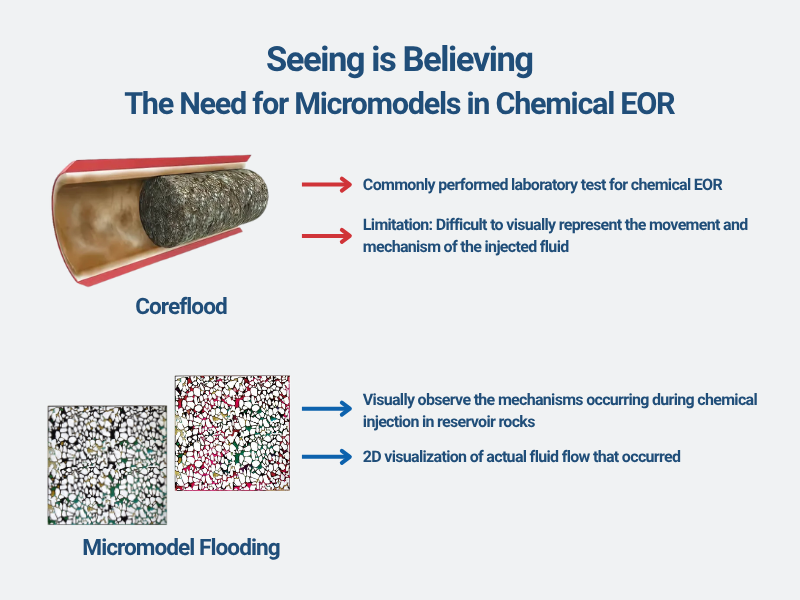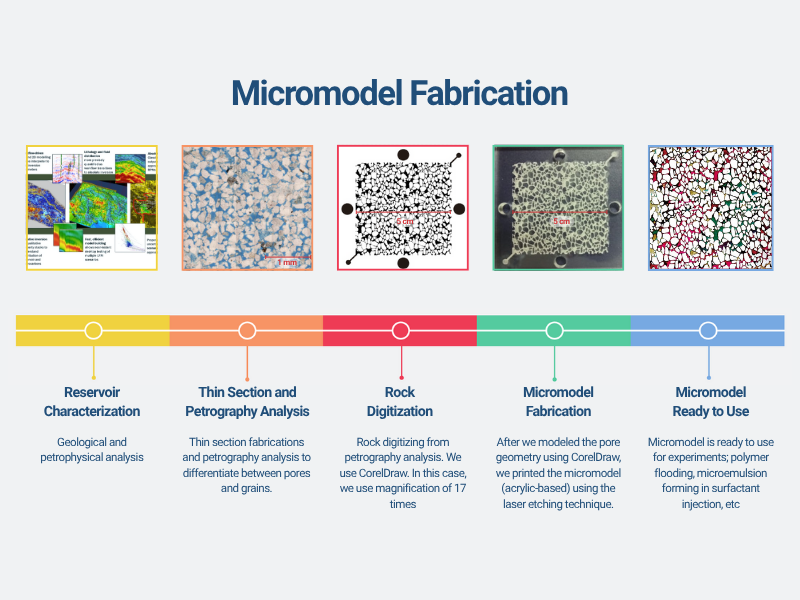Amid the challenges of enhanced oil recovery (Enhanced Oil Recovery), laboratory methods capable of visually representing fluid displacement mechanisms have become increasingly crucial. This is where the micromodel emerges as an innovative solution proudly developed by Indonesian researchers.
Micromodel is a two-dimensional laboratory device designed to replicate the pore structure of reservoir rocks, such as sandstone or carbonate rocks. Through a micromodel, the movement of fluids—such as water, oil, surfactants, and polymers—can be observed directly and in real-time.

Most conventional laboratory tests, like coreflooding, have limitations in providing direct visualization of chemical injection mechanisms. Micromodel address this challenge by enabling real-time observation of interfacial tension changes, wettability alteration, and viscosity displacement efficiency at the pore scale.
What Is the Purpose of Using a Micromodel?
Micromodel are used to:
- Visually analyze the working mechanisms of chemical EOR
- Evaluate the effectiveness of surfactants or polymers before upscaling to larger tests
- Design efficient and targeted injection strategies
- Identify phenomena such as channeling, viscous fingering, and oil entrapment often undetectable in conventional tests
Micromodel of OGRINDO ITB have some advantages:
- Indigenous Innovation: Designed and developed by skilled local researchers.
- Fast, Simple, and Cost-Effective: More efficient than coreflooding, in terms of time and cost.
- Costumized Design: Tailored to match pore characteristics of sandstone or carbonat, even based on actual reservoir data.
- Real-Time Visualization: Enables direct observation of fluid behavior at the microscopic scale.
- Supports More Accurate EOR Design: Acts as a bridge between laboratory results and real-field applications.
Fabrication Process of the Micromodel
Fabrication process of micromodel includes the following stages:

- Reservoir Characterization: Identifying the physical and petrophysical properties of the reservoir rock, such as porosity, permeability, fluid saturation, and geological structure.
- Thin Section & Petrography Analysis: Observing ultra-thin rock slices under a microscope to study mineral composition and rock textures.
- Rock Digitization: Converting physical rock data into 2D or 3D digital models.
- Micromodel Fabrication: Creating the micromodel through pore-pattern design, etching, and assembling materials using techniques such as thermal bonding.
- Micromodel Ready to Use: Final stage where micromodel has passed all fabrication and characterization tests, making it ready for EOR experiments such as surfactant or polymer injection or other EOR mechanism.
The key advantage of OGRINDO's micromodel lies in its design flexibility. By incorporating actual geological and petrophysical field data, micromodel can be customized to closely replicate real reservoir conditions. This makes the experimental results more relevant and reliable for supporting technical decisions in the field.

🔬 Micromodel is more than just a testing device—it is a window into a deeper understanding of subsurface fluid behavior. With OGRINDO ITB, let’s create smarter, more efficient, and data-driven EOR solutions.
📞 For more information or collaboration opportunities, contact our team at OGRINDO ITB.

